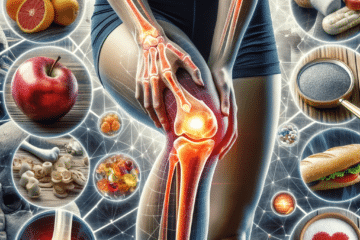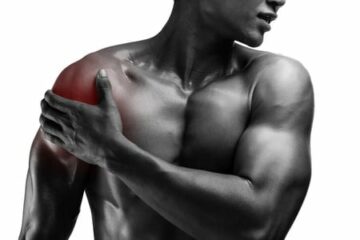
Running injuries are awful, and injured runners are cranky. Recovering and rehabilitating a running injury properly is critical… but not having a solid return to running program can easily cost you 12-24 months in a never-ending cycle. Runners are a unique breed to treat in the office, and we are often our own worst enemy.
First off… our injury was probably due to an error in judgment about our training. Then… we injure something, and the same day it feels better, we go right back out as if nothing happened. The same pace, cadence, and distance as before the injury occurred. A proper return to running program can stand between a solid recovery and return to running or a chronic nagging issue that will stay around for years.
Running is one of the highest injury-inducing sports, with some literature demonstrating an incidence over 70% – and this is only considering a first or new injury in adult athletes. Other studies that examine the incidence of re-injury in return to running show a startling 15-25% for groin injuries, 44% for the Achilles tendon, and about 40% for proximal hamstring tendinopathy. Why are these numbers so high?
The number one reason for injury – whether new or reoccurring- is an error in training; thus, causing overuse and repetitive strain injuries. Many factors in training can lead to mental and physical issues if not appropriately managed. Some of those factors include:
- Intensity – are you training in Zone 2, or do you spend most of your week training at higher intensities? Are you following the 80/20 rule?
- Volume – Do you increase your mileage too quickly or do you follow the 10% rule?
- Shoes – Are you running in old shoes or shoes that are not right for you? This post will help you find out.
- Sleep- Not enough sleep or recovery – Did you take enough rest days or cross-training days? Are you sleeping at least 7-9 hours each night?
- Recovery/Rest days: Recovery can be a weapon if used appropriately.
Now not to be re-injured when returning to running
We know you’re miserable when you’re not running. We know you want nothing less than to return to your usual volume and running patterns today… but that approach will often mean you will be calling my office again in a week.
Now, these are the training errors that likely contributed to your injury at first; however, they are the same training errors I see in runners who either re-injure the same body part or cause a different injury somewhere else. So – if you are coming off of an injury and wondering how you can avoid being back in my office six weeks later, try to avoid these…
5 common mistakes runners make when returning to running after an injury
- Going back to full mileage: If you were running 25 miles each week or 5 miles everyday before your injury, don’t think that you can return to that same 5 mile run and feel 100%. In fact, don’t expect to return to half of the mileage you were doing previously in the first few weeks of return. Your body might be healed – yes – however, it isn’t necessarily strong enough to handle 4-7x your bodyweight for 1500 steps every mile. Recovery from injury exacts a large toll on our bodies. Our tendons are weaker, our bones are thinner, our physiological systems that handle aerobic stress have lost their conditioning. This is a critical time to follow your return to running program closely. They are designed to expose your body to increased stresses slowly over time to get you back on the road… safely.
- Returning to speed workouts too soon: Your tendons and bones require even MORE strength and stability to take on higher intensities than just Zone 2 running. Again, your tissues are healed; however, that doesnt mean they are ready for high intensity, active stretching and power production. If you only run 3 days per week. Just doing 1 speedworkout is 33% of your training – that is much more than the suggested 20% (80/20 rule). Speedwork should be your last priority. Work more on rebuilding your base-level of running and endurance before you play with higher intensities.
- Stopping your strength training and PT exercises: Just because your pain has subsided and you feel fine does not mean you should stop doing the exercises that got you there. Your PT may have given you glute exercises for a weakness pattern and yes they have likely gotten stronger from doing the exercises everyday. However, just like running, if you stop doing it then the fitness is lost quickly. If you stop doing your glute exercises or calf strengthening, then you will likely lose that strength you worked so hard to build. Instead of stopping these exercises completely, reduce the frequency to maybe 2-3x/week as part of your maintenance routine. Runners require strength training too!
- Not allowing for proper rest days at first. Rest days are always important – even at the peak of our training. Our body is like bread dough that needs time at rest to full rise to the occasion. Yet, this becomes particularly crucial as you return to running because of the delayed onset of symptoms. For example, some tendon injuries will feel fine – maybe even better – during exercise as blood flow and adrenaline helps reduce your pain. But then you lay awake at night or wake up the next day with throbbing pain because everything is just – well – pissed off again. When you return to running following an injury, make sure to give yourself at least 1 day between days of running to fully assess your symptoms. Is there any swelling? Is my pain worse the next day? Does the pain take 2-3 days to subside or does it recover fairly quickly (i.e. within a couple hours on the day you ran)? Start with the goal of running 2-3 days each week as you begin to buid yourself up again and be cautious to not run more than 2 consecutive days for the first 3-4 weeks.
- Minimizing the value of the “walk-run”. Your first few days (or even weeks) of running should be “walk-run” intervals. For example, your first day of running should look like this:
- 5 minutes of walking to warm up
- 1 min run, 4 min off
- 1 min run, 4 min off
- 1 min run, 4 min off
- 1 min run, 4 min off
- 5 minutes of walking to cool down
Work with your physical therapist or other healthcare providers during this time, so you have the best understanding of how to progress safely. Once you can run for 20-30 minutes straight without pain, then you can start to follow concepts like the 10% rule as you build miles each week.
After working hard in your physical therapy and rehabilitation, it can feel so exciting to be pain-free again; yet, the return to running is such a slippery slope if not done strategically. Regardless of your symptoms, it is crucial that you utilize the guidance of your healthcare professional and/or physical therapist in following the return to running protocol.
It is safe to start running for most injuries even if you are still having a small amount of pain. More research supports the continuation of running during the healing process of tendonitis due to the stimulation of molecules within a tendon that assist in resolving the inflammation. Caution should be taken as you exercise with an injury to make sure compensatory strategies do not cause dysfunction elsewhere.
Remember – the main goal in injury rehab is to ensure that your body is stronger and more mechanically stable than before. It is also a great time to figure out which training errors you were making previously that you can correct and be mindful of as you get back to running after injury.














I’m going to start back running and don’t want to injure myself again. This will be useful.
Thank you.